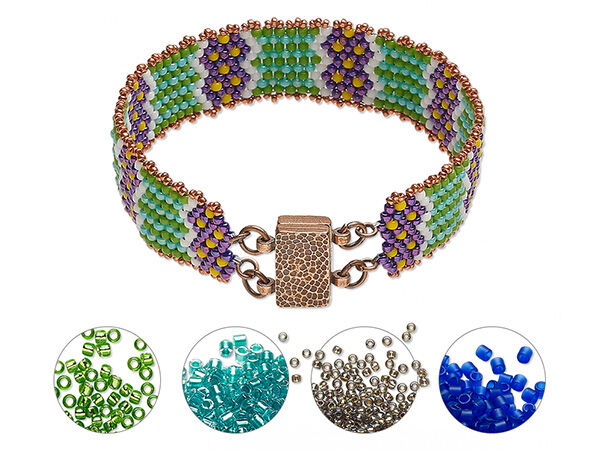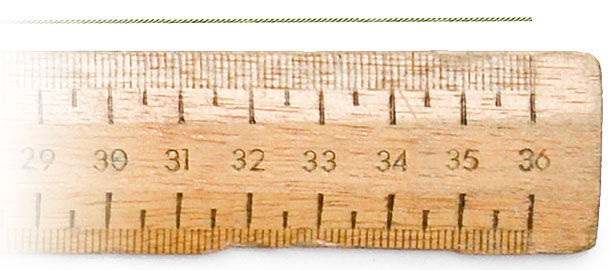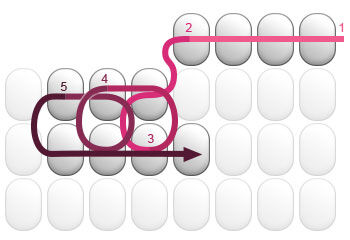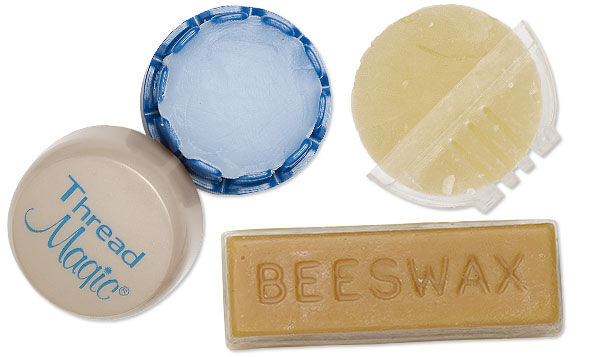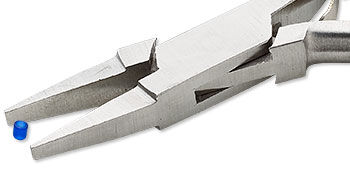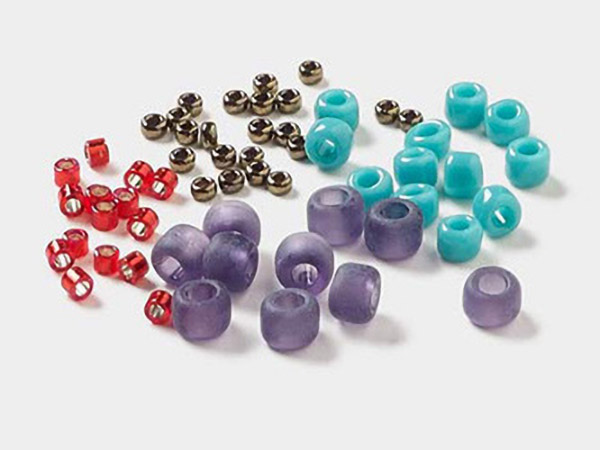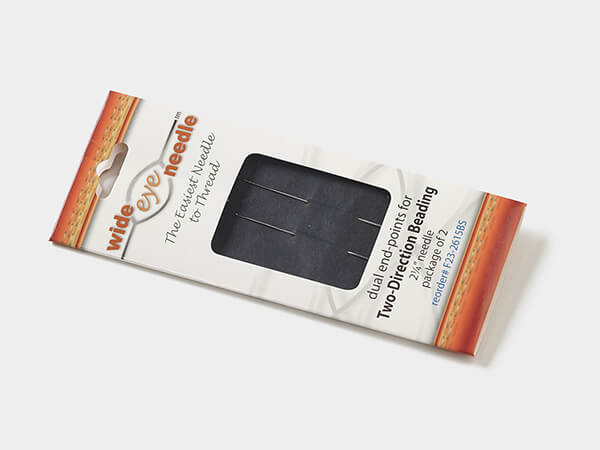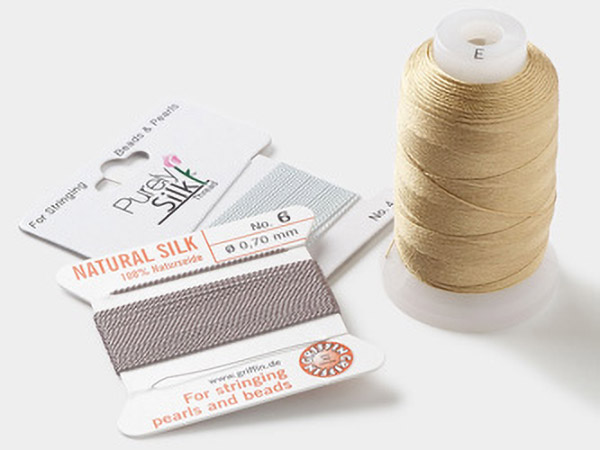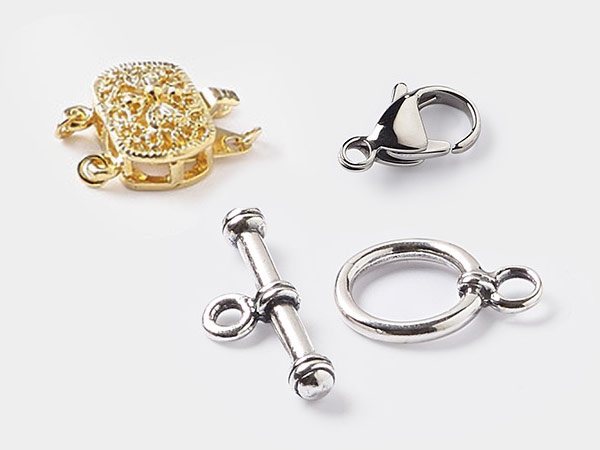Seed Bead Troubleshooting and Success Guide
Whether you are new to seed beading or a seasoned pro, here are some common pitfalls and tips for successful seed bead projects.
Correct Beads
Sometimes it's tempting to use whatever beads you have on hand, and sometimes this works, but this may not always be the case. It's important to use the beads that are called for by a project's instructions--size, shape or brand. The beadwork may not lie flat or hold its intended shape with different beads. For example, using a larger bead size than called for in a project can impact the thread tension of the design. Use Fire Mountain Gems and Beads' Free ''Seed Bead Sizes and Hole Sizes'' chart to find the right seed bead size and get hole size information at a glance.
Manageable Amount of Thread
The amount of thread you work with and the way you add additional thread or tie it off when you are finished is similar for peyote stitch, square stitch, weaving on a loom and many other bead stitches.
It might seem easier to work with the entire length of thread needed for a project, but you will most likely need to plan on adding thread. It's important to work with a manageable length of thread, typically 1 - 2 yards. Using any longer thread can lead to twisting, tangling, knotting, breaking and wearing the thread out as it passes through the beads time and time again.
Adding Thread
When your thread gets down to 6 - 8 inches, it's a good time to weave the thread tail in a "figure 8" pattern where the threads cross over each other. The threads crossing over each other is very important, as this will keep the thread from coming undone. Start a new length of thread in the same manner by passing through several beads and exiting from the point where you left off.
View Fire Mountain Gems and Beads' Free how-to ''Thread a Needle with Ease, How-To'' and FREE video tutorial and instructional guide on knotting.
Knotting and Tangling
Avoid this frustration by using a manageable length of thread (1 - 2 yards) or less. Most often the culprit is using beading thread that's too long. It's always a good idea to apply a thread conditioner to the thread to avoid knotting. If knots still happen, loosen and remove the knot using an extra beading needle or awl. Just be careful to avoid splitting the thread. One of the easiest solutions is ending the thread and starting a new thread. Not sure which thread conditioner is right for your design? View our ''Everything You Need to Know About Thread Conditioners'' article for more information.
Thread Splitting
Split threads can show up weeks or months later as a hole in your beadwork project. It's important to solve split threads as you work. The best thing to do is remove your beading stiches until you come to the place where the split thread occurred. Leave enough of a thread tail to weave back in, trim the thread and end it. It's better to start a new thread than to continue weaving with a thread that's been weakened by a split.
Fixing Mistakes
If you have discovered a wrong bead or need to fix a stitching error, simply unthread your needle and slowly work your way back to your mistake. Trying to work backwards with the needle may lead to splitting the thread, broken beads and knotting.
Breaking a Bead
You can remove a bead from your beadwork by smashing it with beading pliers. The trick to crushing a bead without cutting the thread is all in which direction you break the bead. Position the pliers so they are on the top and bottom outside edge of the bead and then squeeze the pliers gently.
Gaping and Tension Issues
It's important to get good tension in the starting rows, pulling both the tail thread and working thread tight, so the first few rows slot into place well. Pulling your thread tight every time you add a new bead will help to avoid gaps and tension issues in your beadwork.
Read Kristal Wick's--designer, author, jewelry-making expert--response to improving tension in a right-angle weave in Fire Mountain Gems and Beads' Ask the Experts question and answer. Jewelry-making expert Michelle Wood addresses the tension issues of wiggly, spiraled or twisty beadwork in Fire Mountain Gems and Beads' Ask the Experts question and answer.
Shop for Your Materials Here:
Have a question regarding this project? Email Customer Service.
Copyright Permissions
All works of authorship (articles, videos, tutorials and other creative works) are from the Fire Mountain Gems and Beads® Collection, and permission to copy is granted for non-commercial educational purposes only. All other reproduction requires written permission. For more information, please email copyrightpermission@firemtn.com.
